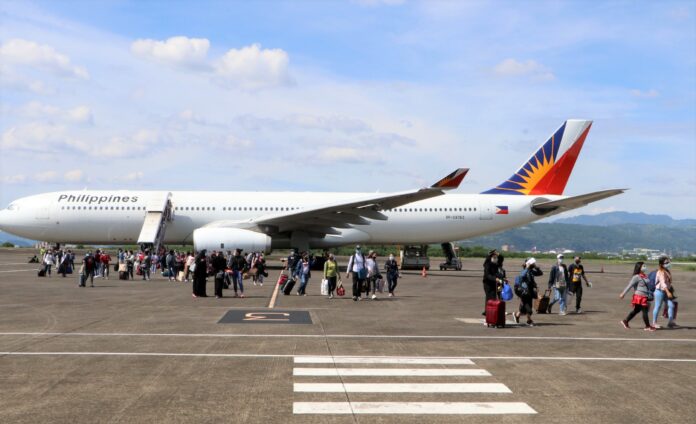
-
Aircraft movement in Subic airport increased 25% in the third quarter of 2021
-
The airport earned P1.6 million from OFW flights in the third quarter of 2021
-
Subic hotels generated P218.7 million in indirect income
-
Philippine Airlines uses Subic to fly home OFWs stranded abroad due to the Covid-19 pandemic
The use of Subic Bay International Airport (SBIA) as an alternate port of entry for the government’s OFW (overseas Filipino workers) Repatriation Program since July has increased international aircraft and passenger movements and improved income for the airport, said Subic Bay Metropolitan Authority (SBMA) chairman and administrator Wilma T. Eisma.
“In the third quarter of 2021 alone, the OFW flights had provided the Subic airport P1.6 million in direct income as well as P218.7 million in income for Subic hotels. But aside from the impact on revenue, we’re proving here that Subic can be a global gateway and that’s what’s more important from a strategic point of view,” Eisma said in a statement.
Philippine Airlines (PAL) uses Subic to fly home OFWs stranded abroad because of the Covid-19 pandemic.
According to a report from the SBMA Port Operations Group, aircraft movement at the Subic airport in the third quarter of 2021 increased to 17,756, or by as much as 25% compared to the 14,220 recorded year-on-year.
While most of the movement were those of domestic aircraft, a total of 55 international flights landed in the months of July, August and September. These resulted in increased movement of international passengers, from just 137 in the second quarter of 2021 to 5,800 in the third quarter.
“The increase in international passenger movement by 4,134% was attributed to the repatriation of overseas Filipino workers and retuning overseas Filipinos,” said Ronnie Yambao, SBMA senior deputy administrator for operations group.
Yambao added that in the same period, Subic airport posted an actual revenue of P62.15 million, surpassing its revenue target of P49.52 million by 126%. The third quarter income was also 32% higher than in the same period last year.
Broken down, airport income came from leases (P40.48 million), airport fees (P21.62 million), and royalty income (P48,672).
Since July this year, when Subic became an alternate port for OFW repatriation, a total of 27 OFW flights had been flown by the Philippine Airlines, aside from nine that were diverted to Clark Airport during bad weather.
SBMA airport manager Zharrex Santos said that under the OFW program, the SBIA handled a total of 9,159 international passengers consisting of 8,455 land-based and 421 sea-based OFWs, as well as 274 Filipino and nine foreign non-OFW passengers.
Santos said the latest PAL flight that brought in OFWs landed in Subic on Oct 26, with 299 passengers from Abu Dhabi.
Eisma said they are “continuing with the airport rehabilitation program that we started three years ago, and the successful OFW flights now are an indication that we have made substantial progress in upgrading SBIA facilities and equipment.”
Among completed upgrades were a new Doppler very high frequency omnidirectional range distance measuring equipment, an automated weather observation system, an area navigation approach, and new air-ground communication system for air traffic control.
Eisma said the increase in aircraft and passenger movements as well as airport income defied the odds at a time when international air passenger traffic was down by 60% and airport revenues by 66% because of the Covid-19 pandemic.
A Philippine Airlines flight arrives at the Subic Bay International Airport on Oct. 26 with 299 OFWs from Abu Dhabi. Photo from the Subic Bay Metropolitan Authority website.




